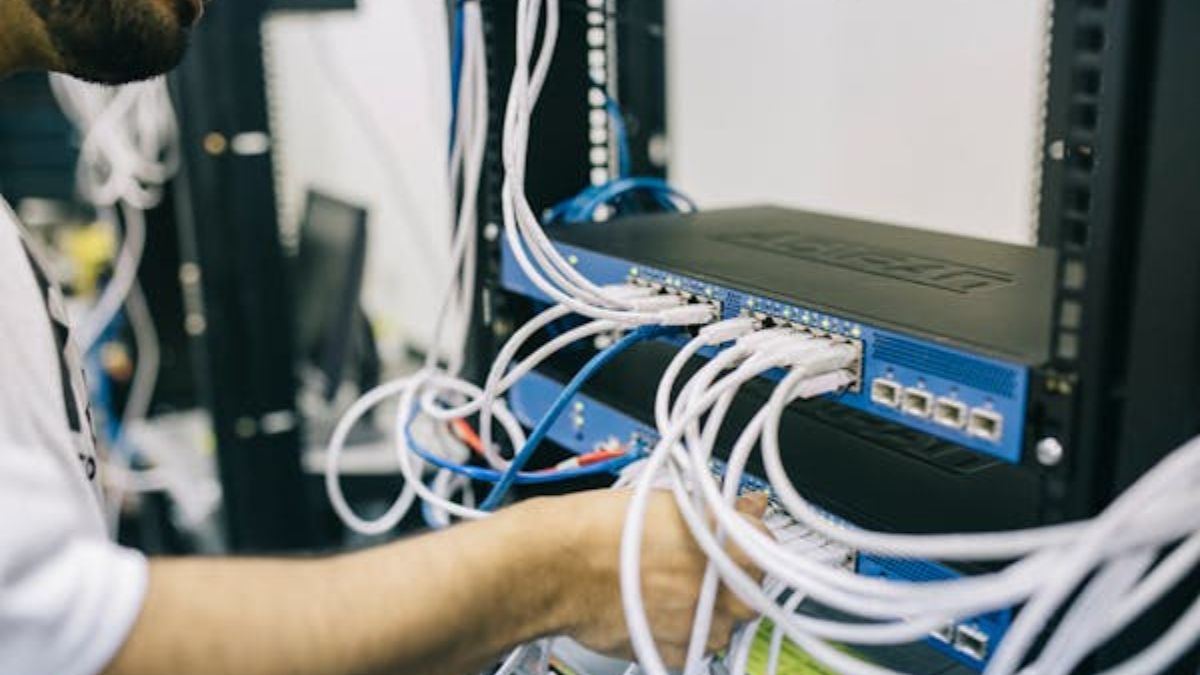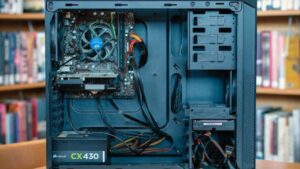TECHNOLOGY
AI Buzzwords: Understanding the Hype and Reality in Academia

Artificial Intelligence (AI) is one of the most transformative technologies of our time, with applications ranging from everyday consumer products to complex scientific research. As AI continues to evolve, so too does the language surrounding it. Buzzwords like “machine learning,” “deep learning,” “neural networks,” and “big data” have become commonplace, especially in academic circles. But what do these terms really mean, and how do they shape the discourse in academia?
The Rise of AI Terminology in Academia
In recent years, AI-related buzzwords have surged in academic papers, conferences, and discussions. This rise is partly driven by the rapid advancements in technology, but it’s also a result of the need to communicate complex ideas in a more digestible form. However, the use of these buzzwords can sometimes lead to misunderstandings, overhyped expectations, or even the dilution of the underlying science.
Machine Learning: Beyond the Buzz
Machine learning (ML) is perhaps the most frequently used term in the AI lexicon. At its core, ML refers to algorithms that allow computers to learn from and make decisions based on data. While the concept is relatively simple, the way it’s presented in academic literature can be quite nuanced. Researchers often delve into various subfields of ML, such as supervised learning, unsupervised learning, and reinforcement learning, each with its own set of methodologies and applications.
Despite its widespread use, “machine learning” is sometimes used as a catch-all phrase, obscuring the specific techniques or challenges involved. This can lead to a superficial understanding of what ML can actually accomplish, both in terms of potential and limitations.
Deep Learning: The New Frontier
Deep learning, a subset of machine learning, has become another dominant buzzword. It involves neural networks with many layers (hence “deep”), which are capable of processing large amounts of data and recognizing patterns with a high degree of accuracy. In academia, deep learning has been heralded as a breakthrough in fields such as computer vision, natural language processing, and even healthcare.
However, the excitement surrounding deep learning can sometimes overshadow its drawbacks. For example, deep learning models require vast amounts of data and computational power, making them less accessible to researchers with limited resources. Moreover, these models often function as “black boxes,” providing little insight into how they arrive at specific decisions, which can be problematic in sensitive applications like medicine or law.
Neural Networks: The Brains Behind AI
Neural networks are the backbone of many AI systems, particularly in deep learning. Inspired by the structure of the human brain, these networks consist of layers of interconnected nodes (neurons) that process information. In academic settings, neural networks are studied for their ability to mimic human cognitive processes, solve complex problems, and improve over time through learning.
Yet, the term “neural network” is often used loosely, sometimes without a clear understanding of the underlying mechanics. This can lead to confusion, especially when non-experts interpret academic papers. It’s crucial to distinguish between different types of neural networks, such as convolutional neural networks (CNNs) for image processing and recurrent neural networks (RNNs) for sequential data, to appreciate their respective strengths and limitations.
Big Data: The Fuel for AI
Big data refers to the vast amounts of structured and unstructured data generated every second, from social media posts to scientific experiments. In the context of AI, big data is the fuel that powers machine learning and deep learning models. Academic research often emphasizes the importance of big data in training these models, enabling them to detect patterns, make predictions, and even generate new knowledge.
However, the term “big data” is not without its pitfalls. The sheer volume of data can be overwhelming, and not all data is useful. Researchers must be careful to select, preprocess, and analyze data properly to avoid biased or misleading results. Additionally, big data raises ethical concerns, particularly regarding privacy and data security, which are critical issues in both academic research and real-world applications.
Natural Language Processing: Bridging Human and Machine Communication
Natural Language Processing (NLP) is a subfield of AI focused on the interaction between computers and human language. This includes tasks like speech recognition, sentiment analysis, and language translation. NLP has gained significant attention in academia due to its potential to revolutionize how we interact with machines.
Despite its promise, NLP is often oversimplified in discussions, leading to unrealistic expectations. Understanding the nuances of NLP, such as the challenges of context understanding, ambiguity in language, and cultural differences, is essential for anyone working in or studying this field.
The Impact of AI Buzzwords on Research Funding
One of the most significant effects of AI buzzwords in academia is their influence on research funding. Terms like “AI-driven,” “smart technology,” and “intelligent systems” are often used to attract funding from both public and private sectors. While this can drive innovation, it also has the potential to skew research priorities, with projects that fit the current buzzwords receiving more attention and resources, sometimes at the expense of more foundational or long-term studies.
The Risk of Overhyping AI in Academia
The use of AI buzzwords can lead to overhyping the technology, creating a disconnect between what is scientifically feasible and what is expected. This is particularly problematic in academia, where research is supposed to be grounded in evidence and critical thinking. Overhyping can result in rushed publications, overstated claims, and ultimately, disillusionment when the promised breakthroughs fail to materialize.
How to Navigate AI Buzzwords in Academic Research
For academics, navigating the landscape of AI buzzwords requires a balanced approach. It’s important to stay informed about the latest trends and terminology while also maintaining a critical perspective. Researchers should strive to be precise in their language, avoiding the temptation to use buzzwords as a shortcut for complex ideas.
Furthermore, interdisciplinary collaboration can help demystify AI concepts. By working with experts in computer science, mathematics, ethics, and other fields, academics can develop a more holistic understanding of AI and its implications.
Conclusion: The Future of AI Terminology in Academia
As AI continues to evolve, so too will the language we use to describe it. While buzzwords can be useful for communicating ideas quickly and attracting attention, they must be used carefully to avoid miscommunication and overhype. In academia, where precision and clarity are paramount, it’s essential to look beyond the buzz and engage deeply with the underlying science.
FAQs
- Why are AI buzzwords so prevalent in academic research?
AI buzzwords are prevalent because they help communicate complex ideas more easily and can attract funding and attention to research projects.
- What are some common misconceptions about AI buzzwords?
Common misconceptions include overestimating the capabilities of AI based on terms like “deep learning” or “big data,” without understanding the underlying limitations and challenges.
- How can researchers avoid the pitfalls of AI buzzwords?
Researchers can avoid pitfalls by using precise language, thoroughly understanding the concepts they are discussing, and collaborating across disciplines to ensure a well-rounded perspective.
- What is the impact of AI buzzwords on public perception?
AI buzzwords can shape public perception by creating hype, which can lead to unrealistic expectations or fear about the technology.
- Will AI buzzwords continue to evolve?
Yes, as AI technology advances, new terms will emerge, and existing buzzwords will evolve to reflect the latest developments in the field.
TECHNOLOGY
Boosting Efficiency in Manufacturing: Practical Insights

Harnessing Technology for Improved Efficiency
Technology is a cornerstone for elevating efficiency in today’s competitive manufacturing landscape. Adopting advanced systems such as OEE software allows manufacturers to monitor and optimize operations meticulously, thus reducing unnecessary downtime and enhancing overall productivity. By utilizing such software, businesses can align their processes with strategic goals, gaining insights through data-driven analytics that pinpoint improvement areas.
Moreover, incorporating IoT and automated machinery significantly reduces manual intervention, minimizes human error, and increases precision in manufacturing tasks. Tools like predictive maintenance enabled by these technologies foresee equipment failures, providing a timely alert system for intervention that circumvents expensive downtimes. Embracing such innovative technologies is becoming synonymous with modern manufacturing excellence, hence their rise to indispensability.
Effective Performance Monitoring Techniques
Accurate performance monitoring is crucial for maintaining efficiency in manufacturing processes. Key Performance Indicators (KPIs) such as cycle time, yield, and machine uptime are the quantitative foundations for assessing efficiency levels. By routinely assessing these metrics, manufacturers can uncover inefficiencies and implement timely corrections to enhance overall output.
Advanced systems that facilitate comprehensive monitoring offer invaluable real-time data analytics, significantly enhancing the speed and accuracy with which inefficiencies are identified. The power of such systems lies in their ability to provide actionable insights that drive informed decision-making, ultimately leading to sustainable improvements in manufacturing practices.
Training and Developing the Workforce
The efficiency of manufacturing processes is closely tied to the skills and proficiency of the workforce operating them. To keep pace with technological advancements, it is essential to nurture and develop employees’ skills continually. Through comprehensive training programs, workers become more adept at handling emerging technologies and existing systems, enhancing productivity and operational cohesion.
Development programs that foster continuous learning and adaptability prepare the workforce to confidently engage with new technologies, enhance job satisfaction, and reduce turnover rates. This dual benefit positively impacts the overall morale and efficiency of the manufacturing environment, creating a balanced and forward-thinking workspace.
Optimizing Workflow Processes
An optimized workflow is paramount to enhancing manufacturing efficiency. The process begins with a thorough analysis of current operations to identify bottlenecks and areas of waste. Implementing lean manufacturing techniques and agile methodologies allows manufacturers to refine workflows, improve cycle times, and reduce waste.
In practice, redefining process structures to enforce a seamless flow of operations ensures that all team members work towards the unified objective of heightened productivity. This systematic approach boosts overall efficiency and facilitates a more equitable distribution of workload, alleviating the pressure on individual departments while fostering a cohesive work environment.
Incorporating Sustainability Practices
Sustainable practices in manufacturing benefit the environment and enhance efficiency. Manufacturers can realize cost savings by focusing on resource conservation and waste minimization while fostering a green image. Implementing energy-efficient systems, recycling programs, and sustainable material sourcing is becoming a standard in achieving operational efficiency and environmental responsibility.
Adopting these practices is increasingly crucial as consumers and stakeholders demand greater corporate responsibility. Insights from resources such as the EPA’s sustainability guidelines highlight how sustainable practices can enhance operational efficacy. These efforts contribute to a healthier planet and lead to significant operational benefits, bolstering the bottom line and improving the industry’s reputation.
Case Studies of Successful Implementations
Examining real-world applications offers valuable insights into the benefits and challenges of various efficiency strategies. Numerous businesses have successfully enhanced their efficiency by adopting new technologies and methodologies. These case studies provide a wealth of knowledge by demonstrating best practices and potential pitfalls encountered during implementation.
Sharing these success stories highlights the transformative impacts that strategic efficiency initiatives can have on manufacturing processes. They serve as a roadmap for others looking to replicate success, offering practical guidance and inspiration for embarking on similar efficiency enhancement journeys.
Addressing Potential Challenges
Implementing new efficiency strategies often comes with challenges that must be effectively managed to prevent disruption. These include overcoming employee resistance to change, navigating the complexities of new technological installations, and managing the financial implications of such investments. To surmount these hurdles, fostering open communication and involving all stakeholders throughout the process is imperative.
Aligning technological solutions with the organization’s specific needs ensures a smoother transition and integration, helping mitigate the typical risks associated with major technological shifts. By approaching these challenges strategically, manufacturers can facilitate a smoother transition toward greater efficiency and innovation.
Future Trends in Manufacturing Efficiency
The future of manufacturing efficiency is poised for significant transformation as advanced technologies continue to evolve. The emergence of AI and robotics promises to redefine efficiency by offering unprecedented levels of automation and intelligence in manufacturing processes. These advancements provide enhanced capabilities to anticipate trends and adapt rapidly to changes, ensuring a competitive edge.
By staying informed and adaptable, manufacturers can leverage these cutting-edge technologies to maintain relevance and thrive in an ever-evolving industrial landscape. Continuously exploring innovative solutions and methodologies will be vital to unlocking new efficiencies and sustaining competitive advantage in the global market.
TECHNOLOGY
Top 10 Must-Have Tech Gadgets for 2024

As we step into 2024, the tech world is bursting with innovative gadgets designed to make our lives easier, more connected, and more entertaining. Whether you’re a tech enthusiast, a fitness fanatic, or someone who loves to stay ahead of the curve, these top 10 must-have tech gadgets will surely elevate your lifestyle. Let’s dive in!
1. Smartwatches
Smartwatches are redefining the wearable tech landscape with their seamless blend of style, functionality, and affordability. These smartwatches are equipped with advanced health monitoring features such as heart rate tracking, sleep analysis, and even blood oxygen levels. They also come with multi-sport modes to track various activities and workouts accurately. With a range of customizable watch faces, you can personalize your smartwatch to match your style and mood. Whether you’re tracking your fitness goals or staying connected on the go, smartwatches have you covered. Explore the latest smartwatches here.
2. Fitness Trackers
For fitness enthusiasts, the latest fitness trackers come packed with features like heart rate monitoring, sleep tracking, and GPS. These devices help you keep track of your fitness goals, monitor your health, and stay motivated to reach new milestones. With detailed insights into your daily activities and overall wellness, fitness trackers are essential for anyone looking to stay healthy and active.
3. Next-Gen VR Headsets
Virtual reality is becoming more immersive than ever with the latest generation of VR headsets. These devices offer stunning visuals, improved motion tracking, and a vast library of games and experiences. Whether you’re exploring virtual worlds, watching immersive videos, or engaging in intense gaming sessions, next-gen VR headsets are a must-have. They transport you to a different realm, providing an unparalleled experience that blurs the line between the virtual and the real world.
4. Smart Home Assistants
Smart home assistants are evolving with more features and integrations. From controlling your smart home devices to providing you with the latest news, weather updates, and even playing your favorite tunes, these assistants make everyday tasks easier and more convenient. Look for models with advanced voice recognition and seamless integration with your smart home ecosystem. They can turn your home into a smart, automated haven where everything runs smoothly.
5. Foldable Smartphones
Foldable smartphones are making a big splash in the tech world. These innovative devices offer the convenience of a smartphone with the expanded screen space of a tablet. Perfect for multitasking and media consumption, foldable smartphones are poised to become a staple in the gadget arsenal. With their flexible displays, they provide a new level of versatility, allowing you to switch between compact and expanded modes with ease.
6. Wireless Earbuds
Say goodbye to tangled wires and hello to high-quality sound with wireless earbuds. These earbuds offer superior sound quality, active noise cancellation, and a comfortable fit, making them perfect for workouts, commutes, or just relaxing at home. Plus, their long battery life ensures you stay connected all day. Whether you’re listening to music, taking calls, or catching up on podcasts, wireless earbuds provide an unparalleled audio experience. Discover more about these fantastic earbuds here.
7. Wireless Charging Stations
Keep your devices powered up without the clutter of cables with wireless charging stations. These sleek gadgets can charge multiple devices simultaneously and offer fast charging capabilities, making them a convenient addition to any tech setup. Just place your devices on the charging pad, and let the wireless magic happen. They’re perfect for keeping your smartphone, smartwatch, and earbuds charged and ready to go.
8. Smart Glasses
Smart glasses are taking wearable tech to the next level by integrating augmented reality (AR) into everyday eyewear. These glasses can display notifications, navigate, and even provide real-time translation, making them an exciting gadget to watch in 2024. Imagine having essential information displayed right in front of your eyes without needing to look down at your phone. Smart glasses are about to revolutionize how we interact with the world around us.
9. Portable Projectors
Portable projectors are perfect for on-the-go entertainment. Whether you’re hosting a movie night, giving a presentation, or creating an outdoor theater experience, these compact devices offer high-quality projections and easy connectivity to your devices. They’re lightweight and easy to set up, making them ideal for bringing big-screen fun wherever you go.
10. Advanced E-Readers
For book lovers, advanced e-readers offer features like adjustable warm light, longer battery life, and waterproof designs. These e-readers provide a comfortable reading experience and can store thousands of books, making them a must-have for any avid reader. With their high-resolution displays and extensive storage, you can carry your entire library with you and enjoy reading anywhere, anytime.
As technology continues to evolve, these gadgets represent the forefront of innovation, enhancing our daily lives in myriad ways. Be sure to explore these amazing products and stay ahead of the tech curve in 2024. For more information on smartwatches, visit here, and for wireless earbuds, check out here.
TECHNOLOGY
The Importance of Rugged UPS in Industrial Environments

One of the best solutions for maintaining operational efficiency is a rugged Uninterruptible Power Supply (UPS). Unlike standard UPS units, rugged UPS systems are designed to withstand extreme conditions and provide protection against power disruptions caused by weather, equipment problems, or other environmental factors. The adaptation of rugged technology has become increasingly important as industries strive for uninterrupted service so that their processes run smoothly and without interruption.

Understanding Rugged UPS
Rugged UPS systems are built specifically to withstand tough environmental conditions. These power supplies showcase robust designs, often featuring shock and vibration resistance along with protection against moisture and dust. In industries like oil and gas, manufacturing, and transportation, this resilience is critical because devices are frequently subjected to harsh elements.
Equipment failures can lead to significant downtime and productivity losses, highlighting the necessity of reliable power solutions that excel in reliability and operate flawlessly even in extreme temperatures or challenging situations. Utilizing systems that are compliant with industry standards can help reduce liabilities and ensure workplace safety.
Choosing the Right Rugged UPS for Your Needs
Given the numerous options available out there, you want to select the right rugged for your needs. Analyze the unique power requirements of your operations. Once you understand wattage needs and runtime expectations, you can guide your choice significantly.
Assessing the environmental conditions where the UPS will function is equally important. Temperature fluctuations, exposure to dust, or vibration levels should inform your decision-making process. Even evaluate the system’s expandability and ability to scale as operational demands increase. Evaluating the manufacturer’s reputation and support services can also provide insights into the long-term reliability and performance of the UPS system. Make sure to validate the UPS certifications to ensure compliance with industry standards.
Look for suppliers like acumentrics.com/products/rups/ that check all these boxes. After all, the selected rugged UPS must align with your operational needs and future growth plans.
The Role of Rugged UPS in Operations
A primary role of rugged UPS systems in industrial environments is to provide a seamless power transition during outages. These systems ensure that essential equipment operates without interruption, safeguarding data integrity and maintaining workflow efficiency. They allow operators to implement contingency measures during power failures without immediate pressure.
With advanced technology, modern UPS units can also regulate voltage fluctuations and protect sensitive equipment from damage caused by poor power quality. Companies dependent on high-performance machinery can experience costly downtime without a reliable power backup system.
Key Features to Consider
Several features make rugged UPS systems essential for industrial environments. First and foremost, the durability of these systems cannot be overstated. They typically come with reinforced enclosures that protect them from physical damage while allowing them to function optimally in hostile conditions. Similarly, extensive battery life is a critical feature, ensuring they can provide prolonged power support during blackouts.
The capability for remote monitoring and management is another integral component: it allows technicians to assess the performance of the UPS seamlessly. This feature enhances predictive maintenance and reduces the chances of unforeseen failures by facilitating timely interventions. Reliability and redundancy contribute to uninterrupted service even if one system experiences issues.
Benefits of Implementing Rugged UPS
Implementing rugged UPS systems yields several tangible benefits that go beyond mere power supply continuity. The primary advantage is the reduction in mission-critical downtime. Equipment that remains operational during power interruptions leads to enhanced productivity and minimized financial losses. The ability to protect sensitive equipment from power anomalies can reduce repair or replacement costs significantly.
Many industries face potential losses from data corruption due to unexpected outages, which can be alleviated through the proper use of UPS systems. The long-term cost efficiency achieved by investing in these systems far outweighs the initial capital expenditure. With an eye toward sustainability, rugged UPS systems can integrate with solar and wind energy sources, paving the way for cleaner energy options in daily operations.
The Future of Rugged UPS Technology
The evolution of technology continues to transform the landscape of power solutions, and rugged UPS systems are no exception. As industries become more automated and reliant on integrated systems, the advancements in UPS technology respond to these changes. Emerging trends include greater integration with IoT devices and enhanced machine-learning capabilities for predictive maintenance.
Improved battery technologies, most notably lithium-ion options, also promise longer lifespans and shorter recharge times, enhancing the overall functionality of rugged UPS systems. Sustainability considerations increasingly play a role in the design of future UPS solutions, allowing for more eco-friendly operations. The future landscape of rugged UPS is poised for further innovation, ensuring their place as essential components in industrial environments.

Adopting rugged UPS solutions equips businesses with the tools necessary to navigate the complexities of industrial environments. Their robust design and reliable performance mitigate risks associated with power interruptions, resulting in improved operational efficiency. Investing in a suitable rugged UPS protects equipment and strengthens the overall resilience of business operations.

 Cartoon9 months ago
Cartoon9 months agoUnlocking the Potential of Nekopoi.care: A Comprehensive Guide

 Game8 months ago
Game8 months agoExploring Aopickleballthietke.com: Your Ultimate Pickleball Destination

 BUSINESS8 months ago
BUSINESS8 months agoWhat Companies Are In The Consumer Services Field

 TECHNOLOGY7 months ago
TECHNOLOGY7 months agoThe Guide to Using Anon Vault for Secure Data Storage

 HOME IMPROVEMENT9 months ago
HOME IMPROVEMENT9 months agoVtrahe vs. Other Platforms: Which One Reigns Supreme?

 ENTERTAINMENT9 months ago
ENTERTAINMENT9 months agoThe Epic Return: Revenge of the Iron-Blooded Sword Hound

 HEALTH9 months ago
HEALTH9 months agoUnveiling the Mystery of Pikruos: A Comprehensive Guide

 HOME IMPROVEMENT9 months ago
HOME IMPROVEMENT9 months agoExploring the Events of 2023-1954: A Look Back in Time
















